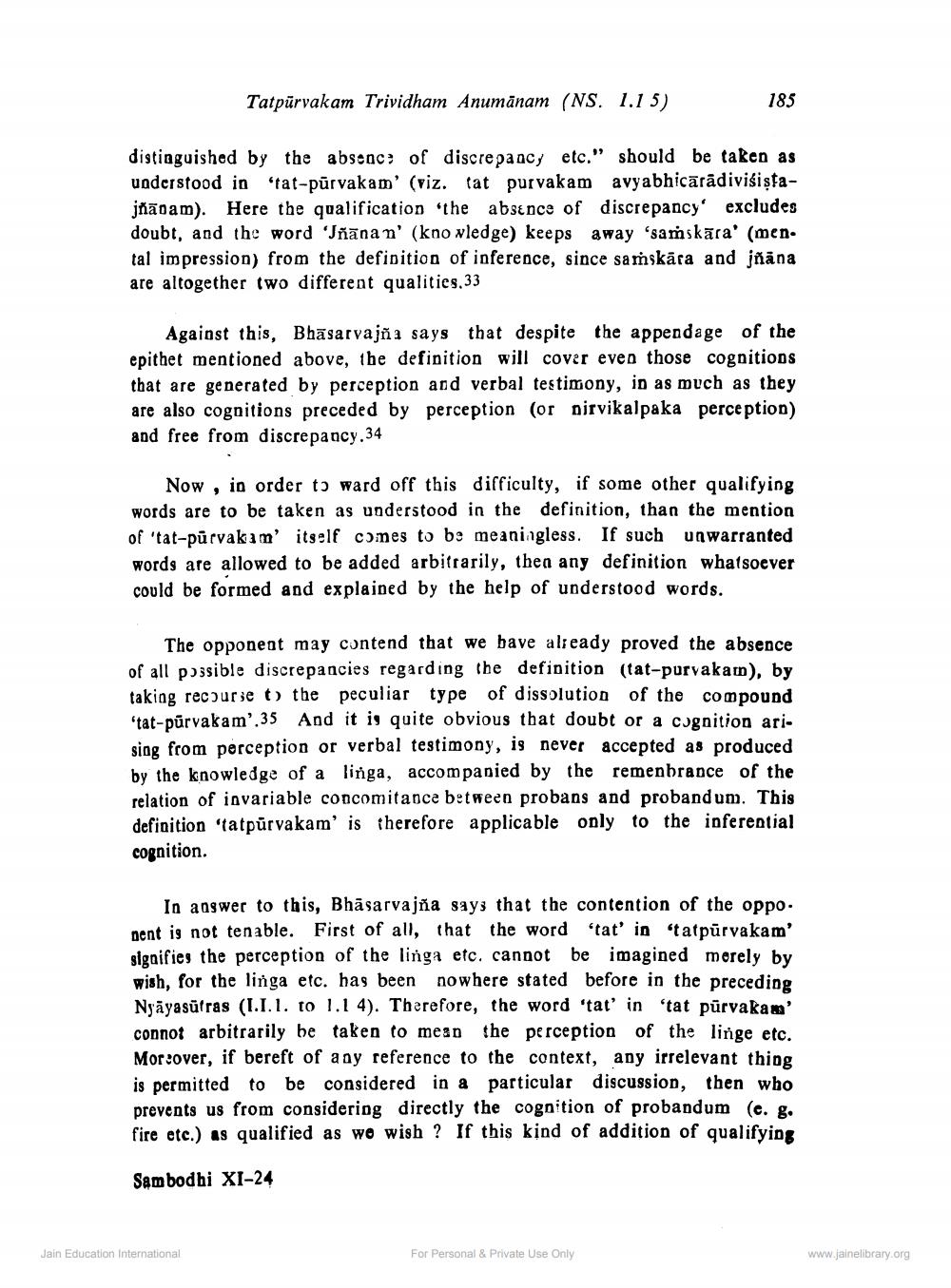________________
Tatpūrvakam Trividham Anumānam (NS. 1.15)
185
distinguished by the absence of discrepanc; etc." should be taken as understood in tat-pūrvakam' (viz. tat purvakam avyabhicārādivisistajñādam). Here the qualification the absence of discrepancy' excludes doubt, and the word 'Iñāna n' (knowledge) keeps away saṁskāra' (men. tal impression) from the definition of inference, since saṁskāra and jñāna are altogether two different qualities.33
Against this, Bhāsarvajña says that despite the appendage of the epithet mentioned above, the definition will cover even those cognitions that are generated by perception and verbal testimony, in as much as they are also cognitions preceded by perception (or nirvikalpaka perception) and free from discrepancy.34
Now , in order tɔ ward off this difficulty, if some other qualifying words are to be taken as understood in the definition, than the mention of 'tat-pūrvakin' itself comes to be meaningless. If such unwarranted words are allowed to be added arbitrarily, thea any definition whatsoever could be formed and explained by the help of understood words.
The opponent may contend that we have already proved the absence of all possible discrepancies regarding the definition (tat-purvakar), by taking recourse to the peculiar type of dissolution of the compound tat-pūrvakam'.35 And it is quite obvious that doubt or a cognition arising from perception or verbal testimony, is never accepted as produced by the knowledge of a linga, accompanied by the remenbrance of the relation of invariable concomitance between probans and probandum. This definition atpūrvakam' is therefore applicable only to the inferential cognition
In answer to this, Bhāsarvajña says that the contention of the oppo. pent is not tenable. First of all, that the word "tat' in 'tatpūrvakam' signifies the perception of the linga etc. cannot be imagined merely by wish, for the linga etc. has been nowhere stated before in the preceding Nyāyasūtras (I.1.1. to 1.1 4). Therefore, the word 'tat' in 'tat pūrvakam' connot arbitrarily be taken to mean the perception of the linge etc. Moreover, if bereft of any reference to the context, any irrelevant thing is permitted to be considered in a particular discussion, then who prevents us from considering directly the cognition of probandum (e. g. fire etc.) as qualified as we wish? If this kind of addition of qualifying
Sambodhi XI-24
Jain Education International
For Personal & Private Use Only
www.jainelibrary.org




